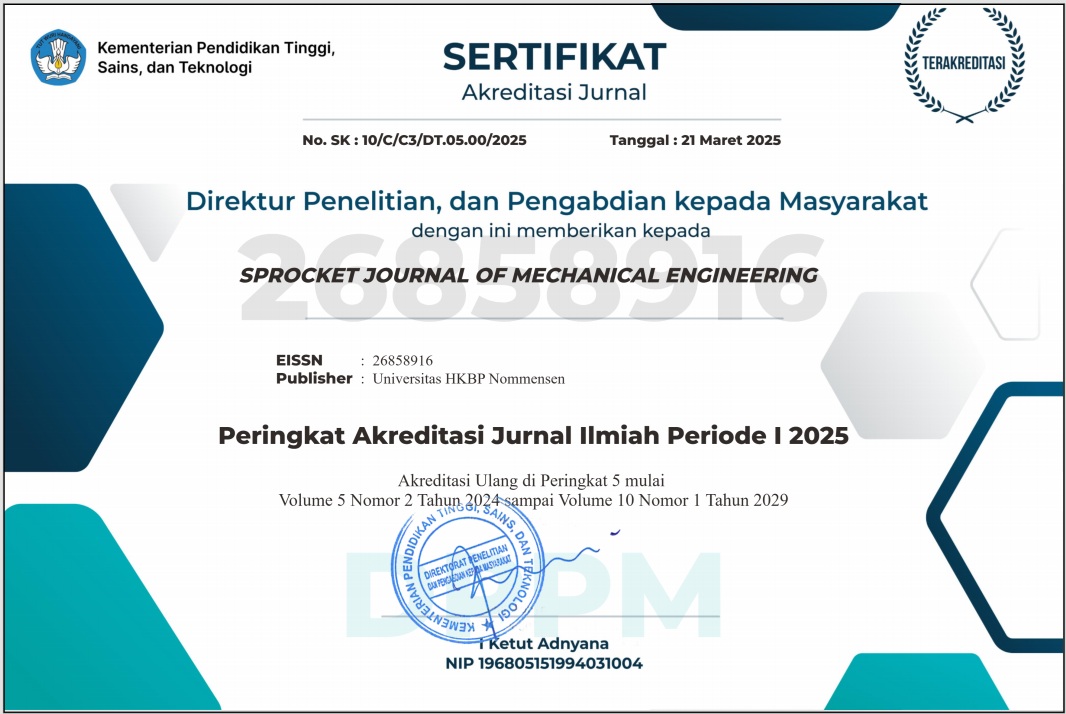Kajian Jarak Aman Antara Arrival Traffic dan Departure Traffic Pada Unit Aerodrome Control Tower di Perum LPPNPI Kantor Cabang Pontianak
Abstract
Supadio International Airport is an airport that serves various types of aircraft (Boeing, Airbus, ATR, Hawk, CN259), and does not have a rapid exit taxiway, in its guidance, Perum LPPNPI Pontianak Branch Office enforces rules for Boeing and Airbus-type arrival traffic for backtrack at the end of the runway, but this rule does not apply to aircraft with other types such as ATR and Cessna. This of course creates a time difference to clear the runway for arrival traffic of the Airbus and Boeing types. This study aims to obtain a safe distance between arrival traffic and departure traffic at the Perum LPPNPI Pontianak Branch Office by applying the calculation of The Brazilian Air Navigation Management Center (CGNA) Runway Capacity Calculation by adjusting the current airport conditions. From the research results, it is found that the value of the safe distance between arrival traffic and departure traffic by considering the aircraft classification can produce a more optimal safe distance.
References
International Civil Aviation Organization. Doc. 9426-AN/924 Air Traffic Service Planning Manual.1984.
International Civil Aviation Organization. Doc 8168 OPS/611 Aircraft Operations.2006.
International Civil Aviation Organization. SAM/IG/4 WP/35. Runway Capacity Calculation The Brazilian Air Navigation Management Center (CGNA) 83– 118.2009.
International Civil Aviation Organization. Annex 11 Air Traffic Services.2018.
Organization, International Civil Aviation. Doc 4444 Air Traffic Management. 16th edition. 2016.
Pradana, Aminarno Budi. Metodologi Penelitian Ilmiah. Sekolah Tinggi Penerbangan Indonesia. 2019.
Tiarto, and Daniel D. Rumani. Enhance Airlines Deregulation Technique Commercial Air Transport Schedule Indonesia. 2020.

This work is licensed under a Creative Commons Attribution 4.0 International License.
Penulis yang menerbitkan dengan SPROCKET JOURNAL OF MECHANICAL ENGINEERING menyetujui ketentuan berikut :
- Penulis memegang hak cipta dan memberikan jurnal hak penerbitan pertama dengan karya yang dilisensikan secara bersamaan di bawah Lisensi Internasional Creative Commons Atribusi 4.0 . yang memungkinkan orang lain untuk berbagi karya tersebut dengan pengakuan atas kepengarangan karya dan penerbitan awal dalam jurnal ini.
- Penulis dapat membuat pengaturan kontraktual tambahan yang terpisah untuk distribusi non-eksklusif atas versi jurnal yang diterbitkan dari suatu karya (misalnya, mempostingnya ke repositori institusional atau menerbitkannya dalam sebuah buku), dengan pengakuan atas penerbitan awalnya di jurnal ini.
- Penulis diizinkan dan didorong untuk mengunggah karya mereka secara daring (misalnya, di repositori institusi atau di situs web mereka) sebelum dan selama proses penyerahan, karena hal ini dapat mengarah pada pertukaran yang produktif, serta kutipan yang lebih awal dan lebih banyak dari karya yang diterbitkan (Lihat Pengaruh Akses Terbuka ).






.png)
.png)

